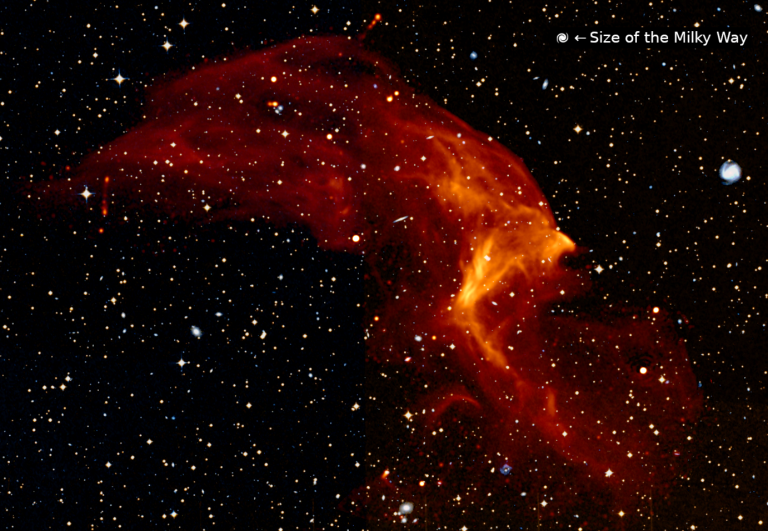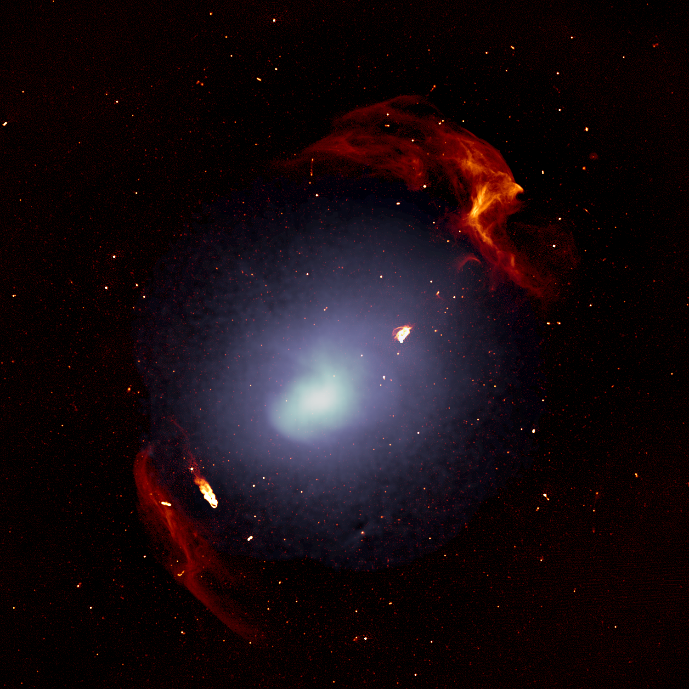An international team of astronomers made the most detailed images of the largest cosmic shock wave visible from earth. These gigantic shock waves are much larger than our entire galaxy and they form when clusters of galaxies collide in what are the most energetic events after the Big Bang.
galaxy clusters
Our Universe is populated by galaxies that are not uniformly spread but concentrated in vast structures. The largest ones contain thousands of galaxies and are called “galaxy clusters”. Sometimes, two galaxy clusters start attracting each other via the force of gravity leading to an inevitable collision. Collisions of galaxy clusters are the most powerful events that occur in our Universe since its formation and they can generate spectacular “fireworks” that we can observe using modern radio telescopes.
shock waves
When two galaxy clusters collide, we can witness the propagation of a pair of gigantic shock waves through the newly formed cluster, similar to the sonic booms from supersonic aircraft. An international team of astronomers made the most detailed study of such cosmic shock waves that were generated during the collision of two massive galaxy clusters more than a billion years ago, forming the galaxy cluster called Abell 3667.
intricate pattern of bright filaments
‘These structures are full of surprises and much more complex than what we initially thought,’ says Francesco de Gasperin (University of Hamburg and INAF) lead author of the study. ‘The shock waves act as giant particle accelerators that accelerate electrons to speeds close to the speed of light. When these fast electrons cross a magnetic field they emit the radio waves that we see. The shocks are threaded by an intricate pattern of bright filaments that trace the location of giant magnetic field lines and the regions where electrons are accelerated.’

shock wave of 6.5 million light years
These shock waves are still propagating through the newly formed galaxy cluster at the very high speed of 1,500 km/s, corresponding to a Mach number of 2.5. The size of the main shock wave is impressive, spanning the entire width of the galaxy cluster for a total size of 6.5 million light years. For comparison, the Milky Way, the galaxy we live in, is more than 60 times smaller than this shock wave.
The observations were carried out using the novel MeerKAT radio telescope, located in South Africa. This telescope consists of 64 individual radio dishes that are 13.5 m in diameter and that are distributed over an area of 4 kilometers.



